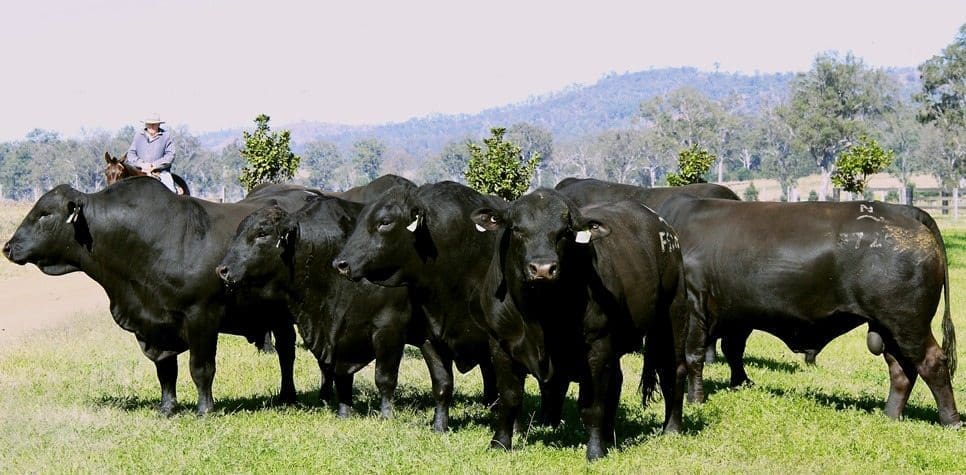
NEW South Wales Local Land Services North Coast region senior livestock officer Nathan Jennings suggests there are four key areas to consider when buying replacement herd bulls.
His choices are reproductive fitness, temperament and structural soundness, conformation and muscling, and Estimated Breeding Values.
“Other people may change the order of importance of these factors, but this is the order I like to consider them in,” Mr Jennings said.
Here are his top tips for buying better bulls:
Reproductive fitness:
The bull has to be reproductively sound so he can produce an adequate quantity of good quality semen and also have the willingness to serve cows. A good way to ensure this is through a Bull Breeding Soundness Evaluation (BBSE). This is not a genetic evaluation but a current physical assessment of the bull’s reproductive performance.
Temperament and structural soundness:
The bull has to be of good temperament and be structurally sound. Temperament is a no-brainer – if a bull is of poor temperament he will be a problem on-farm and it’s very likely his progeny will follow in his footsteps.
Conformation and muscling:
A bull should be well-muscled, which helps ensure their progeny will have adequate muscling as well. Better muscled cattle have heavier carcase weights, tend to have higher dressing percentages, meat yield will often be higher and there tends to be a more even fat distribution over the carcase.
Obviously muscling needs to be balanced with a farm’s environmental conditions, however Beef CRC research showed that in British-bred cattle, increasing the muscle score of a cow from D to C had no adverse effects on her reproductive performance, even in times of nutritional stress.
Estimated Breeding Values:
Any new bulls a breeder is looking to buy should have superior genetics to bulls purchased in the past. EBVs are the best tool available to help provide that genetic benchmark and, therefore, genetic improvement.
When it comes down to choosing between two bulls with similar age, weight, muscle and fat scores, and both have passed their BBSE, then EBVs can show which is actually the more suitable bull for a breeder’s enterprise. They also provide information on traits that can’t be seen, such as marbling score or the fertility of his daughters.
When using EBVs there are three criteria that need to be applied:
- the trait has to be of economic importance to the producer
- the producer has to be able to measure the trait in the progeny
- there has to be variation in the trait, so you can expect to make some gain.
Source: NSW State Government Local Land Services
